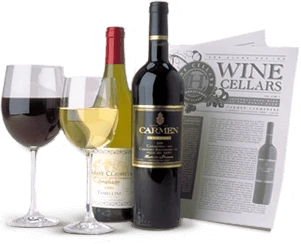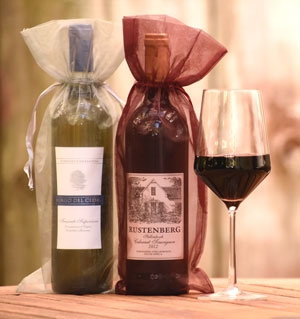When we first tasted the predecessor to the 2009 Château Sainte-Eulalie Minervois La Livinière La Cantilène we proclaimed it “the finest Minervois we have ever tasted.” And that was indeed the case, but that was before we tasted the extraordinary 2009 Château Sainte-Eulalie La Cantilène (this month’s feature). The 2009 eclipses even the outstanding 2008 La Cantilène and all other wines from Minervois that we have ever tasted. For starters, the wine’s complex, expressive bouquet soars from the glass, resplendent with the scents of ripe berries and black fruits, wild herbs, and violet flowers. Even more captivating in the 2009 La Cantilène are the layers of pure fruit and herb infused flavors that caress the mouth and make the thirsty tongue beg for more. Although still quite young, this wine is a joy to drink now, even in the full bloom of youth. One taster so aptly noted: “This wine is so good now; I can hardly imagine what it will be like a couple of years down the road . . . it will probably make me cry with joy.” In an ideal world, one has a case of the 2009 La Cantilène on hand to consume over the next year or two and another case resting quietly in the cellar for up to a decade or more. For near term consumption we suggest allowing the 2009 La Cantilène ample breathing time. The longer this outstanding wine breathes the more captivating it becomes, so open a bottle, pour some into a glass and try to be patient. With time to collect itself and a serving temperature between 60º-65º F, the prodigious 2009 Château Sainte-Eulalie La Cantilène will surely not disappoint. Salut!
Like all of Madame Coustal’s La Cantilène offerings, the 2009 Château Sainte-Eulalie Minervois La Livinière La Cantilène was made to accompany the finest fare from France’s most renowned chefs. La Cantilène is undeniably Madame Coustal’s most prestigious wine and it is featured in a growing number of France’s top restaurants. Roast quail, served with a savory wild mushroom sauce; roast leg of lamb, rubbed with garlic, olive oil, and Provencal herbs; and authentic Provencal cassoulet all get our nod to accompany Madame Coustal’s delectable Minervois. However, one need not be a Cordon Bleu chef to highlight La Cantilène’s many attributes. Simply prepared dishes made with chicken, beef, lamb, or pork won’t steal the thunder from this superb Minervois. Traditional Mediterranean favorites made with beans or lentils pair admirably with Château Sainte-Eulalie’s flagship wine, too, as do cheese and tomato laden dishes such Eggplant Parmigiana and lasagna. Bon appétit!
Château Eulalie is the pride and joy of Laurent and Isabelle Coustal. The Coustals are originally from Bordeaux where Laurent still consults and makes wine. Together they have resurrected and restored the ancient Minervois vineyards surrounding Château Eulalie, including the domain’s very old vines. They grow Syrah, Grenache, and Carignan, the three traditional and most important grape varietals of the Rhône Valley and neighboring Languedoc.
Isabelle Coustal is the winemaker and artisan in residence at Château Eulalie. She fashions several wines from old vines, including Plaisir d’Eulalie, a delicious, medium-bodied wine that is meant for early consumption, and this month’s feature, La Cantilène, a profound, powerful single vineyard offering from what is arguably the greatest cru of the entire Languedoc. Both red wines spring from old vines from some of the Languedoc’s most renowned terroirs. All of Château Eulalie’s grapes are picked entirely by hand and the resulting wines are bottled unfiltered in order to preserve their freshness and rich, haunting flavors. After more than a decade of outstanding work at Château Eulalie, Madame Coustal has earned her reputation as one of Languedoc’s premier winemakers.
Languedoc is the world’s largest single viticultural area, encompassing many appellations and distinctive sub regions – all of which are capable of producing fine wine. This sprawling viticultural wonderland stretches all the way from the Spanish border in the southwest, within sight of the towering Pyrenees, to the banks of the Rhône River far to the northeast. Languedoc cuts a huge swath of dry coastal plain and sheltered mountains from which flow the guts and the glory of French viticulture.
The Languedoc, whose name is synonymous with the language of southern France, was the first part of ancient Gaul to be extensively planted to the vine. And long before the Romans and Caesar’s legions had subdued the Gallic tribes, wine was big business in Languedoc. The Phoenicians passed this way, and not surprisingly the region’s beauty and superb conditions for the cultivation of the vine did not escape the first Greek colonists who planted vines there, making Languedoc the cradle of French viticulture in the fifth century BC. For nearly two thousand years, Languedoc remained the “big dog” and premier purveyor of wine to France and the world. Sadly, the glory of France’s most historic wine region – the birthplace of troubadours and Provencal, the lyrical language of poetry – ended in the 19th century with the advent of phylloxera.
Phylloxera, the most dreaded of all vine diseases because it attacks the roots and systematically sucks the life out of a vine, devastated the vineyards of France in the 19th century, targeting Languedoc as its prime host. Following the phylloxera outbreak, the Languedoc lost most of its premier hillside vineyards, old vines and premium varietals. Subsequent replanting was undertaken using inferior grape varietals that would quickly bring high yields and much needed cash. Moreover, the great hillside vineyards descended to the plains, where soil, drainage and exposure (terroir) were inferior to the older, loftier heights of legend and lore. Consequently, throughout the late 19th century and most of the 20th century as well, the Languedoc languished in the doldrums of viticultural obscurity, unless of course one considers every day plonk as a beverage of choice. Once the proud bastion of French viticultural excellence, the Languedoc became the world’s major source of huge quantities of insipid wines, whose main virtues were none other than high alcohol and cheap prices – all of which were subsidized by the French government.
Today, the Languedoc has returned to its former glory, and no where is this more in evidence than in the Minervois La Livinière appellation. The worldwide demand for cheap, course wine no longer exists; the emphasis today is on quality rather than quantity. In addition, the only official incentive for grape growers is to plant premium varietals, move back to the ancient hillside sites, and produce less wine of greater quality. Since the 1970’s that is exactly what has been happening, which has led viticulturalists and critics alike to proclaim a veritable Renaissance in the Languedoc, especially in the favored appellations of Minervois, Corbières, and Pic St. Loup where choice hillside vineyards of the Languedoc have produced fine wine for millennia.

Enjoy Limited Production Estate
Bottled Wines
Discover limited production estate bottled wines such as Vergenoegd's internationally
acclaimed 2005 Cabernet Sauvignon, imported exclusively for our members.


